More on how marsh gas affects ice
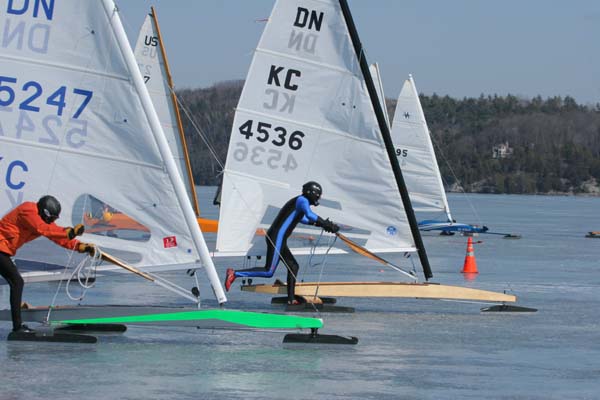
We attempted to sail the 1986 DN iceboat North American regatta on Lake Honeoye in western New York. It was windy and it had been warm for a few days. Henry Bossett was sailing at speed to windward with several other sailors when he dropped a side runner into a gas hole. Henry was not hurt but his boat was destroyed. Luckily, it was not his front runner.
Approximate area with gas holes. The Honeoye Creek delta is the source of the gas bubbling up from the bottom.
When we looked around there were holes and runner tracks all over the place in the area shown in the map above on the northwest end of the lake. The holes ranged from a couple to several feet in dimension with a circular shape. All of them had gas bubbles coming up from the bottom near their center. After the accident the sailors walked most of the lake but did not find any additional holes other than another small area. It turned out that local fishermen had warned some of the iceboaters about the gas holes but with a regatta to sail many others went out before getting the word.
Solitary holes are uncommon (we have only found a few on Lake Champlain in 40 years). About 10 years ago we were sailing a regatta on Missisiquoi Bay, a large, shallow, weedy bay. The ice was a few inches thick and had numerous snow drifts. The temperature was in the mid-upper 20s. One of the sailors noticed that one of the drifts on the layline (the path followed by the racers) to the windward mark a hole in it. (Figure 2)
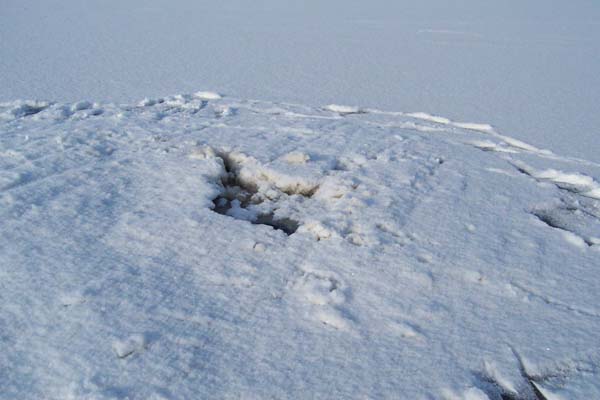 Figure 2 Scale: hole in cap about a foot wide
Figure 2 Scale: hole in cap about a foot wide 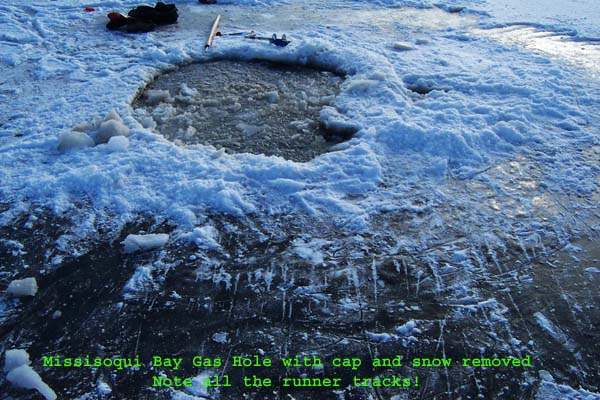 Figure 3. The hole under the cap is about 3.5 feet wide. It was a snow cap over a large gas hole. (figure 2) There were about 20 runner tracks over this drift. (Figure 3). Luckily the hole in the snow roof was spotted before it got big enough to fit a runner. I tested about a hundred other drifts the next day and found no gas holes under any of them. I visited the location five years later and found that the gas stream was not active enough to keep an open hole going.
Figure 3. The hole under the cap is about 3.5 feet wide. It was a snow cap over a large gas hole. (figure 2) There were about 20 runner tracks over this drift. (Figure 3). Luckily the hole in the snow roof was spotted before it got big enough to fit a runner. I tested about a hundred other drifts the next day and found no gas holes under any of them. I visited the location five years later and found that the gas stream was not active enough to keep an open hole going.
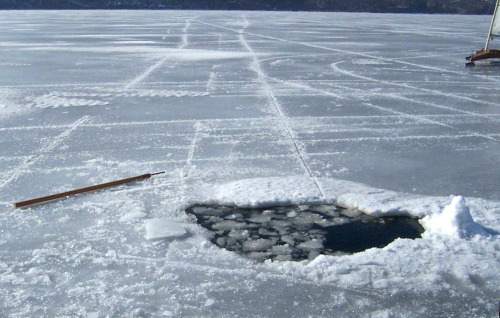 Figure 4: Tri-Town Gas Hole-southern Lake Champlain. The snow cap has been removed.Another friend was not so lucky. He 'found' a solitary gas hole in the center of Lake Champlain off Port Henry NY in mid March of 2003 (Figure 4). The ice was 18 inches thick. He dropped a side runner in the hole and tore the plank off his boat. He was not seriously injured. This picture is of his incoming track. Note how close his front (center) runner track came to the hole! If the front runner goes in there is a much higher chance of a serious injury as illustrated in the video link at the bottom of this page.
Figure 4: Tri-Town Gas Hole-southern Lake Champlain. The snow cap has been removed.Another friend was not so lucky. He 'found' a solitary gas hole in the center of Lake Champlain off Port Henry NY in mid March of 2003 (Figure 4). The ice was 18 inches thick. He dropped a side runner in the hole and tore the plank off his boat. He was not seriously injured. This picture is of his incoming track. Note how close his front (center) runner track came to the hole! If the front runner goes in there is a much higher chance of a serious injury as illustrated in the video link at the bottom of this page.
This hole was still active in 2009 however we were unable to find evidence of it in 2010, 2011 or 2013. We did discover a sizable gas hole in 2013 about two miles north of the one in the above picture.
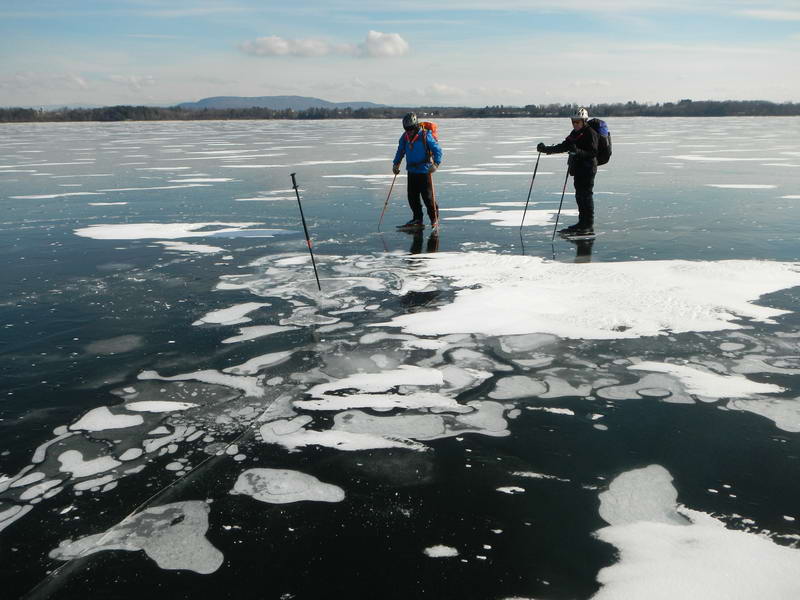 Recently found (February 2013), large gas hole: Location: Northwest of the TriTown water plant: W73D 24' 38.79", N44D 67' 97.4"
Recently found (February 2013), large gas hole: Location: Northwest of the TriTown water plant: W73D 24' 38.79", N44D 67' 97.4"
Gas holes tend to be a problem in the early part of the season, after any significant thaw and in the spring. In the mid-season the cold weather often overpowers the melting ability of the gas stream allowing a reasonably thick roof to develop.
A few years ago we were racing on Lake Dunmore in central Vermont in late winter. The surface was mostly opaque snow ice. One of us sailed up to the starting line, stepped out of his boat and fell through a gas hole to his shoulders! In several visits since we have found a long string of them about 100 yards off shore around the peninsula of Sucker Brook, a high gradient stream that comes in on the east side of the lake. (Lake Dunmore Map) This group of gas holes has accounted for many fishermen falling in and one gas explosion inside a shanty (see Gas and Shantys).
The ice off Sandbar State Park on the east shore of Lake Champlain is very popular with kite boarders, skaters, walkers and iceboaters. It is on the delta of the Lamoile River. There a mile long area running along the beach that has hundreds if not thousands of gas holes. In cold weather they are hard to find. After a significant thaw they are everywhere.
Click Here to see an instructive video of a Nite iceboat hitting a gas hole. A crude estimate of the boat speed is 30-35 mph. It shows visually how violent these collisions are, even at this seemingly modest speed. The ice has been through several days of mostly warm weather and the hole looks like most of the 'roof' had melted away. It is pretty uncommon to have a video of a collision like this. Thanks to Goeff Evans for posting it.
